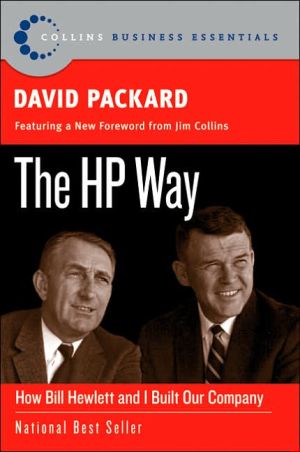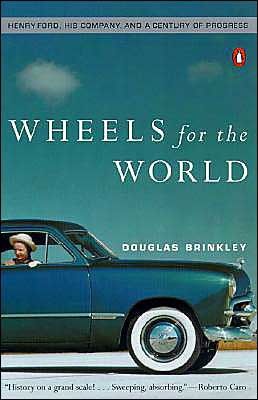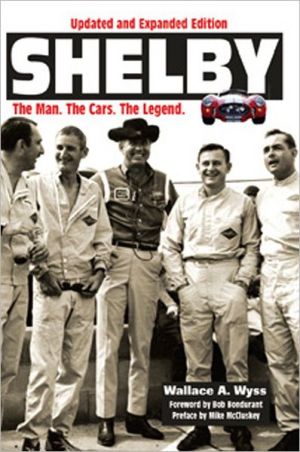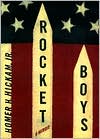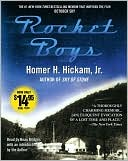747: Creating the World's First Jumbo Jet and Other Adventures from a Life in Aviation
747 is the thrilling story behind "the Queen of the Skies"—the Boeing 747—as told by Joe Sutter, one of the most celebrated engineers of the twentieth century, who spearheaded its design and construction. Sutter's vivid narrative takes us back to a time when American technology was cutting-edge and jet travel was still glamorous and new. With wit and warmth, he gives an insider's sense of the larger than life-size personalities—and the tensions—in the aeronautical world.
Search in google:
747 is the thrilling story behind "the Queen of the Skies"—the Boeing 747—as told by Joe Sutter, one of the most celebrated engineers of the twentieth century, who spearheaded its design and construction. Sutter's vivid narrative takes us back to a time when American technology was cutting-edge and jet travel was still glamorous and new. With wit and warmth, he gives an insider's sense of the larger than life-size personalities—and the tensions—in the aeronautical world. Publishers Weekly As leader of the Boeing company's design and engineering team that created the 747-the world's first wide-body, twin-aisle airplane-Sutter had perhaps the best overall view of all aspects of the 747's development in the mid 1960s. This engaging look at the technical, political and corporate forces that clashed over the 747 adds important details to Clive Irving's 1993 Wide-Body: The Triumph of the 747. Sutter's descriptions of the furious pace his team had to maintain proves his assertion that the 747's development process closely resembled that of aviation's colorful early days. It is fascinating to read that while the 747 later became Boeing's crowning achievement, with variations of the plane continuing to remain popular during the past three decades, various Boeing executives during the '60s "were taken in by the enticing vision" of supersonic transports like the Concorde, and Sutter had to fight "every step of the way to get the 747 designed, built, certified, and into service." 8-page b&w photo insert, 20 b&w photos throughout, not seen by PW. (June) Copyright 2006 Reed Business Information.
747\ Creating the World's First Jumbo Jet and Other Adventures from a Life in Aviation \ \ By Joe Sutter \ HarperCollins Publishers, Inc.\ Copyright © 2006 Joe Sutter\ All right reserved.\ ISBN: 0060882417 \ \ \ Chapter One\ Growing Up With Aviation\ \ The 747 flew for the first time on February 9, 1969. It was a cold winter's day and a highly emotional one for me. We'd had to create this huge new jet so rapidly that its design phase was shorter than that of just about any jetliner before or since. Every challenge had seemed as outsize as the 747 itself. So it was only when I saw the world's first jumbo jet in the air that I knew my team had done it -- we'd created a real airplane.\ I couldn't have done it without my late wife, Nancy. When I'd come home beaten down with problems for which there seemed no solution, Nancy was always there to help lift me out of the dumps. Intelligent, beautiful, full of humor and life, she shared the burden of the 747's development.\ She felt the pressure of our community's hopes and fears. "Does your husband know what he's doing?" her doubting friends would ask. "Do you think that big thing he's designing will actually fly?" Of course, they were only giving voice to the question on everybody's mind in Seattle in the late 1960s, but it still left Nancy feeling none too great.\ On the morning before that first flight, Isensed Nancy needed me to reassure her that our big airliner would fly. I promised her it would. "What's more," I added confidently, "I'll show you just where it'll leave the ground."\ I bundled her into a Boeing station wagon and drove us out to the calculated "unstick" point along the snow-fringed runway. "Kid, you stand right here," I said, letting her out on dry grass a hundred yards off, "and as that airplane goes by, you'll see its wheels lift off the ground right in front of you."\ With a muted whine entirely different from the flaring hiss that jetliners made back then, the prototype 747 taxied to the distant threshold. The pilots completed their last checks, the engines spooled up, and that huge airplane accelerated down the runway.\ Before Nancy's eyes, a jetliner two and a half times bigger than anything then in service broke ground and surged skyward, effortlessly carrying away with it the weight of the world.\ When I picked Nancy up, she was crying. "Oh Joe," she exclaimed, tears of relief running down her cheeks, "it took off just where you said it would!"\ I saw then that she'd gone through just about as much hell as had I or, for that matter, any of the 4,500 people on my engineering team. On that unforgettable day, Nancy and I knew we'd weathered a great and thrilling storm.\ I was born in Seattle, Washington, on March 21, 1921. The world was very wide back then, and our part of it -- the Great Northwest -- was a remote region in one far-flung corner of the United States. The transcontinental rail line came up through Tacoma and pretty well ended in Seattle, so unless your destination was British Columbia or the Yukon, you had to board a ship to go much farther.\ Young and raw, Seattle was itself a bit of a frontier. It was a seaport village, not a city, and it had no skyscrapers except for Smith Tower, which for decades was the tallest U.S. building west of the Mississippi River. Located in Pioneer Square, the old part of downtown Seattle, Smith Tower is today the smallest spire in a bustling skyline. It has glass-doored offices and brass open-frame elevators with human operators and is a universally loved symbol of a vanished era.\ My home state is equally colorful. Washington gained statehood only in 1889, and its wild and wooly days as a western territory were within the living memory of people I knew as a boy. Washington's abundant natural resources made Seattle the jewel of the Northwest, a cosmopolitan universe of big timber, fishing fleets, large ships braving the Pacific to Asia, smaller ones working the Inside Passage to Alaska, and ferryboats plying Puget Sound.\ The spectacular backdrop to all this human activity was nature on a grand scale. My childhood world was a universe of vast wilderness, the sparkling blues of Puget Sound with its orcas and salmon, and towering snow-capped mountains so perfect they look like operatic backdrops. With all the rain that sweeps in off the Pacific, though, there are a lot of days in Seattle when you can't see the mountains.\ We Sutters lived in Beacon Hill, a lower-middle-class neighborhood to the south of downtown Seattle. Ours was a working neighborhood of emigrants from Europe and Asia. There were many nationalities all living together with a real sense of community. Houses had verandahs and -- in those days before air-conditioning or television -- people sat outside enjoying summer evenings, so you got to know your neighbors pretty well.\ My father, Frank Sutter, arrived in the United States from Slovenia at the age of 17. His last name was actually Suhadolc, but like so many immigrants he received an easier last name when passing through Ellis Island. I adored and respected my dad, although I didn't get to spend much time with him. He worked pretty much all the time.\ As a young bachelor, my dad traveled to Alaska in hopes of making his fortune in the Klondike gold rush. He spent a long and very difficult decade toiling in the far north. Family legend has it he helped build a bridge across the Yukon River. He also survived being mauled by a hungry bear that broke into his cabin one night in search of food.\ Dad did ultimately find a small gold deposit. After staking out his claim, he sold it to a Swede for $15,000 -- a very large sum in those days. Giving up the frontier life, he moved to Seattle, where he and a partner started a meat-cutting shop called the Union Packing Company. Soon thereafter, Dad met and fell in love with my mother, Rosa, a recent widow. They were married in 1912.\ \ Continues... \ \ \ \ Excerpted from 747 by Joe Sutter Copyright © 2006 by Joe Sutter. Excerpted by permission.\ All rights reserved. No part of this excerpt may be reproduced or reprinted without permission in writing from the publisher.\ Excerpts are provided by Dial-A-Book Inc. solely for the personal use of visitors to this web site. \ \
1Growing up with aviation12University and war283Douglas, Boeing, and the Stratocruiser374The jet age535I get the 747806A giant takes shape1187Willing to be fired1428The wing and weight crises1519The 747 rolls out15910Into the air17511Transforming the world20212New assignments22513The Challenger disaster24814Consulting in retirement256
\ Homer Hickam"As magnificent and soaring as the big bird itself, Joe Sutter’s true story is . . . fascinating."\ \ \ \ \ Publishers WeeklyAs leader of the Boeing company's design and engineering team that created the 747-the world's first wide-body, twin-aisle airplane-Sutter had perhaps the best overall view of all aspects of the 747's development in the mid 1960s. This engaging look at the technical, political and corporate forces that clashed over the 747 adds important details to Clive Irving's 1993 Wide-Body: The Triumph of the 747. Sutter's descriptions of the furious pace his team had to maintain proves his assertion that the 747's development process closely resembled that of aviation's colorful early days. It is fascinating to read that while the 747 later became Boeing's crowning achievement, with variations of the plane continuing to remain popular during the past three decades, various Boeing executives during the '60s "were taken in by the enticing vision" of supersonic transports like the Concorde, and Sutter had to fight "every step of the way to get the 747 designed, built, certified, and into service." 8-page b&w photo insert, 20 b&w photos throughout, not seen by PW. (June) Copyright 2006 Reed Business Information.\ \ \ Library JournalA lifelong Seattle resident, octogenarian Sutter headed the engineering team that designed and created the Boeing 747 jet plane. His book, cowritten with Spenser, who has authored several aircraft histories (e.g., on the Bellanca, the Aeronca, and early helicopters), concerns the process of bringing the 747 from the drawing board to the market, and all the testing and certifying in between. Sutter places this narrative in the context of his life; he shares interesting details about coming of age in the first half of the 20th century and intersperses anecdotal tributes to his late wife throughout. 747 includes numerous black-and-white photographs, principally basic shots of the aircraft. Because this technical memoir is at least as much a manufacturing case study as an aviation narrative, catalogers may want to expand the subject tracings to reflect its business focus. Of interest to those collecting in the engineering and aviation business areas and appropriate for large public and academic libraries. Sara Tompson, Science & Engineering Lib., Univ. of Southern California, Los Angeles Copyright 2006 Reed Business Information.\ \ \ \ \ Kirkus ReviewsDetailed and absorbing memoir by the engineer who led Boeing's development of the world's most commercially successful airplane. Not that anyone saw it that way when 44-year-old Sutter was offered the job of overseeing the 747 in 1965. Boeing's hottest engineers and designers were tied up with the 2707, a supersonic plane that was expected to be the future of commercial aviation. But in the meantime, Pan Am wanted a really big jet for its increasing number of intercontinental passengers. Sutter had 28 months, two-thirds the usual amount of time, to design, build and deliver a plane "two and a half times bigger than anything in existence." His nearly blow-by-blow account offers fascinating insights into Boeing's internal politics and the power wielded by important customers like Pan Am chairman Juan Trippe. The 747 had public-relations problems from the moment Sutter decided that a single-deck, wide-body fuselage better served the aircraft's safety requirements and its secondary purpose as a freight carrier: Trippe wanted a double-decker, and Boeing senior management wanted to make him happy. But Sutter's philosophy, persuasively reiterated throughout his memoir, was that his job was to find the best engineering solution and make the client see that it was best. "If you don't have the courage to face up to difficult situations-and that includes making sure unwelcome truths are heard and acted on," he writes, "then you have no business being a chief engineer." Readers will hope that today's aerospace executives share the devotion to excellence and safety above all that Sutter displays throughout. (He was appalled by NASA's cavalier attitude when he served on the panel investigating theChallenger disaster.) Despite his onetime maverick status at the company, the 85-year-old retiree is a Boeing man through and through, understandably proud of the manufacturer's sterling record and candid about failures like the never-produced 2707. Well-written and intelligent: a must for aviation buffs, and convincing back-up for Charles Lindbergh's appreciative comment that the 747 was "one of the great ones."\ \


